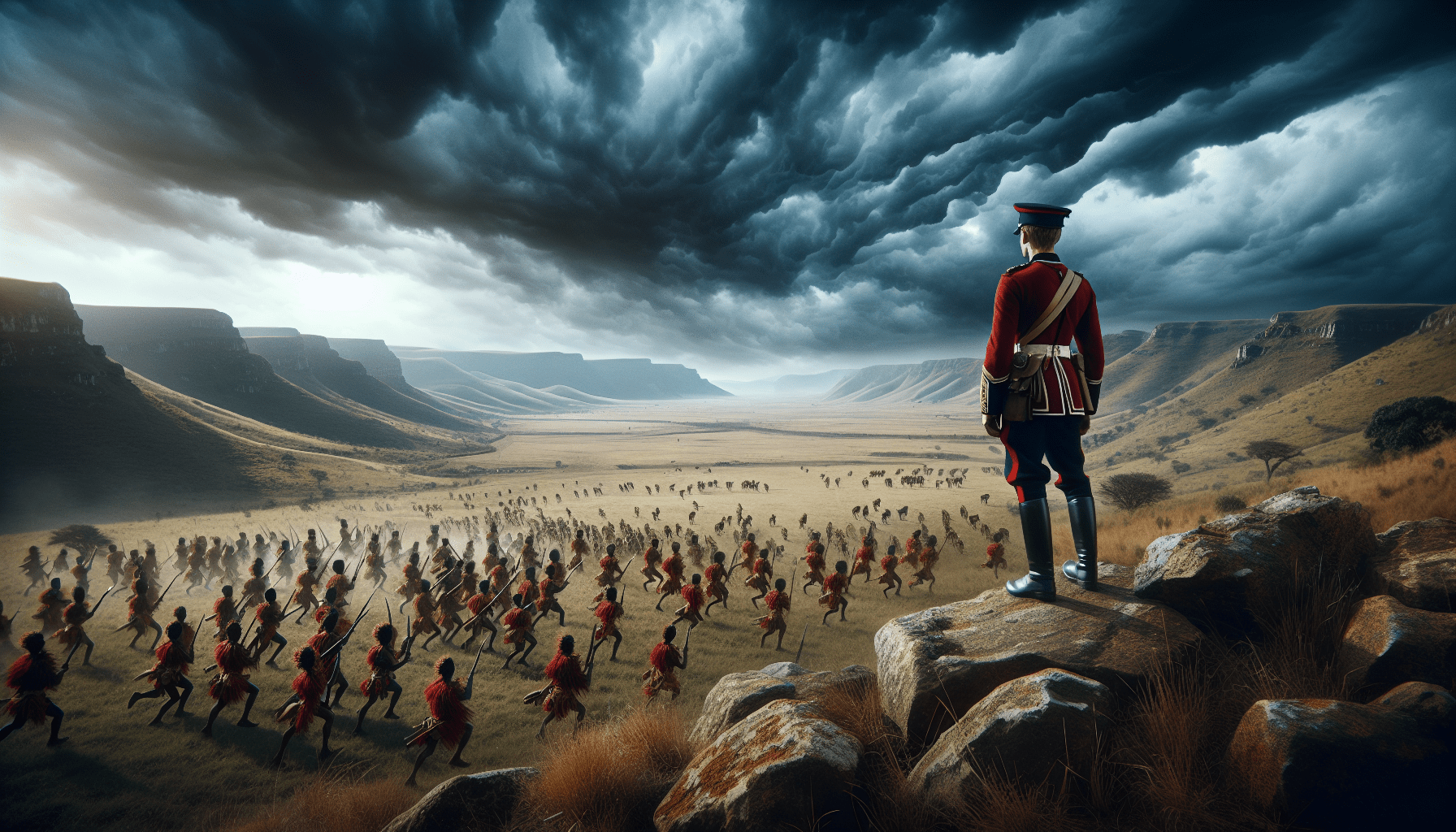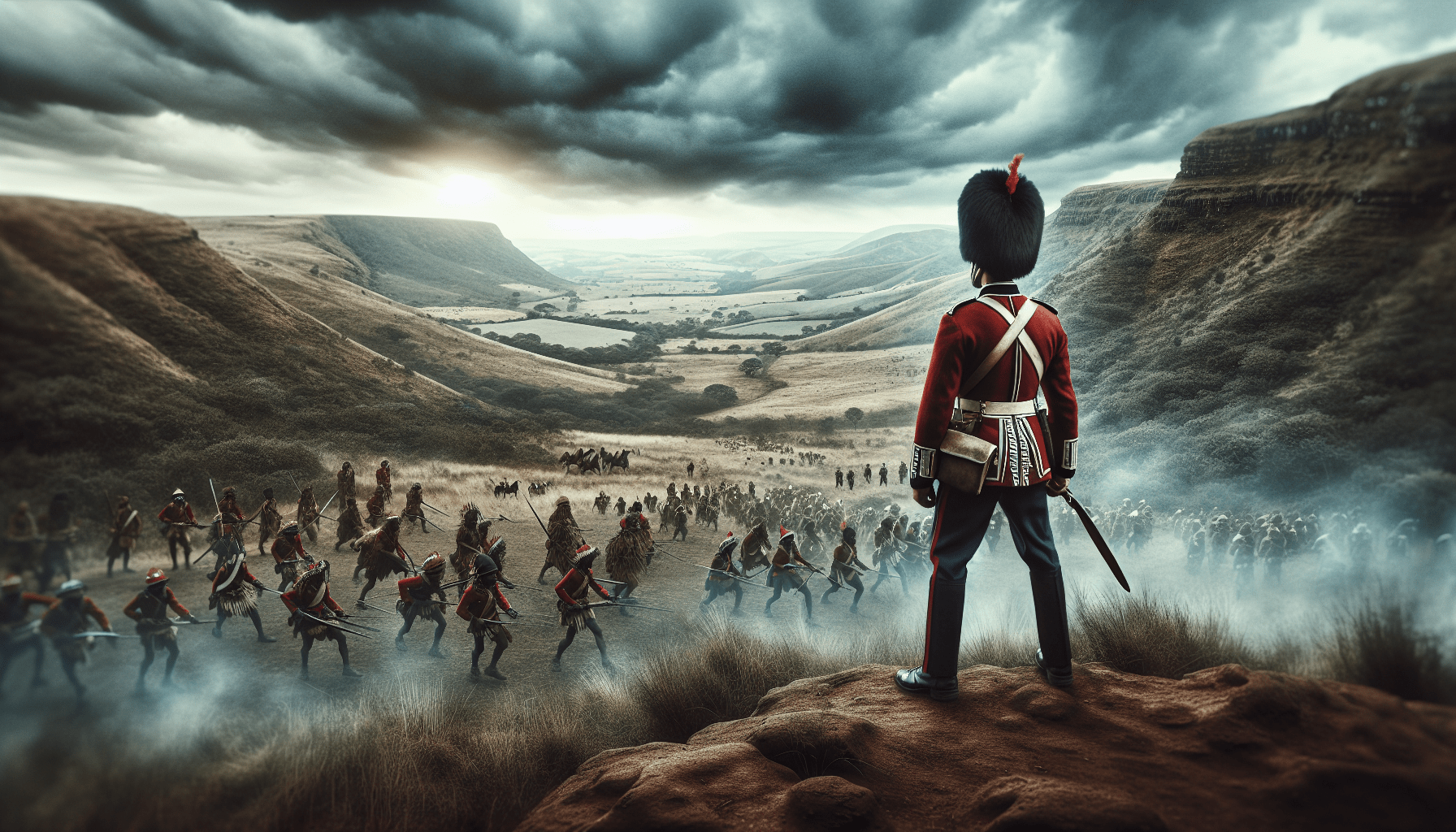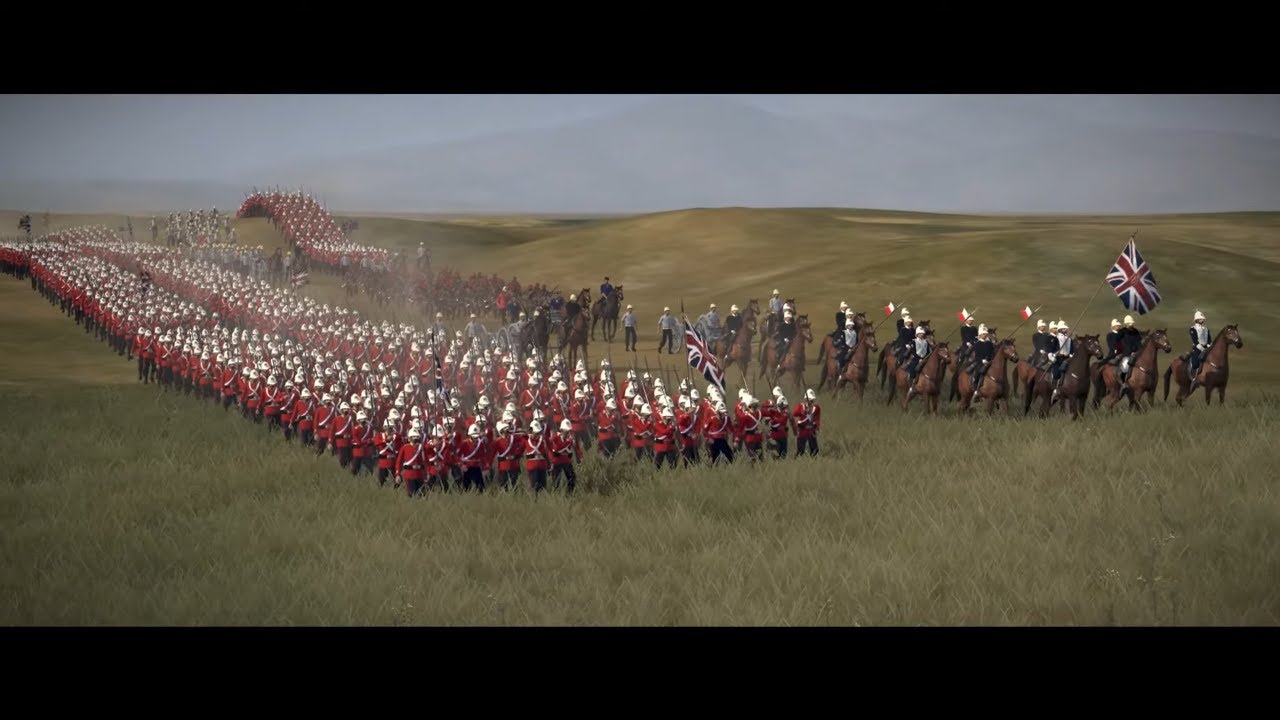The Battle of Gingindlovu, fought on April 2, 1879, marks a significant event in the context of British-Zulu conflicts during the Anglo-Zulu War. This encounter involved a British relief column, led by Lord Chelmsford, tasked with lifting the siege at Eshowe against the formidable Zulu impi commanded by King Cetshwayo. The battle illustrates the tactical maneuvers undertaken by both forces, the challenges posed by the terrain, and the dynamics of colonial warfare that shaped the outcomes of engagements during this period.
You will examine the strategic deployment of forces, including the British troops’ fortifications and the Zulu army’s formation and combat strategies. The article further delineates the progression of the battle, highlighting pivotal moments such as the British infantry’s desperate defense, cavalry engagements, and ultimately, the Zulu retreat that restored British confidence in their military capabilities. By doing so, the factors that led to the British victory and the implications of this encounter for subsequent military operations against the Zulus will be analyzed.
The Battle of Gingindlovu: A Historical Analysis

Historical Context
The Anglo-Zulu War Overview
You stand at the precipice of time, gazing upon the Anglo-Zulu War, a pivotal conflict that occurred in the late 19th century. Spanning from January to July of 1879, the war represented the clash between British colonial aspirations and the formidable Zulu Kingdom in Southern Africa. Fueled by a desire to consolidate their power, the British sought to annex Zulu land, promote their own political agenda, and exploit the region’s resources. The war’s inception lay in the complex interplay of treaties, misunderstandings, and outright provocations, leading to a violent confrontation that would have lasting implications for both the British Empire and the Zulu people.
Emergence of King Cetshwayo
King Cetshwayo emerged as a pivotal figure during this tumultuous period. You observe him as a leader who exhibited not only military prowess but also diplomatic acumen. Ascending to the throne amid a backdrop of unrest and power struggles, Cetshwayo’s reign was characterized by a careful balancing act—a desire to modernize his kingdom while preserving Zulu traditions. His resolve was evident in the formation of a national army, the impi, which became crucial for the Zulus during times of conflict. Cetshwayo’s leadership would be a catalyst for the Zulu resistance against British encroachment, particularly at pivotal moments such as the Battle of Gingindlovu.
British Colonial Ambitions in Southern Africa
The British colonial ambitions in Southern Africa were driven by a fusion of economic greed and a sense of racial superiority. You observe the British strategists, operating under the belief that they were tasked with civilizing the ‘savages.’ The British sought to establish dominance through military might, using their advanced weaponry and organizational structures as tools of suppression. These ambitions were exemplified in their military campaigns and their commitment to dismantling indigenous kingdoms, which the Zulus epitomized. Understanding this colonial context is crucial as it provides a framework through which the significance of the Battle of Gingindlovu can be understood.
Pre-Battle Developments
Siege of Eshowe and British Response
In the months leading up to the Battle of Gingindlovu, you witness the Siege of Eshowe, an event that precipitated the British response. Eshowe was home to a garrison of British troops, encircled by a significant Zulu force. As news of their plight reached the British command, it ignited a sense of urgency. You observe Lord Chelmsford mobilizing a relief column with the goal of breaking the siege—an endeavor that would ultimately lead to the confrontation at Gingindlovu.
Formation of Chelmsford’s Relief Column
The assembly of Chelmsford’s relief column was an intricate operation, reflecting both military logistics and strategic foresight. Comprising approximately 5,670 troops, including Europeans and Africans, Chelmsford fortified his column with artillery and Gatling guns, intending to employ these assets effectively against Zulu tactics. As you explore the logistics, it becomes apparent how the composition of the column was a reflection of both desperation and determination—a testament to the British military’s commitment to reclaiming control in their southern territories.
Strategic Decisions Leading to Gingindlovu
Strategic decision-making in the lead-up to Gingindlovu was a multifaceted endeavor influenced by reconnaissance, intelligence reports, and battlefield conditions. Chelmsford’s route was carefully chosen to avoid terrain that previously facilitated ambushes against British forces. As you analyze these decisions, the significance of information gathering, such as the intelligence provided by scouts like John Dunn, becomes clear. The British military aimed to prepare themselves against a numerically superior Zulu force, and their tactical preparations hint at both their confidence and their trepidation regarding the impending engagement.
The Combatants
British Forces Composition
As you examine the British forces at Gingindlovu, you encounter a diverse array of soldiers, united by a common mission yet divided by various backgrounds. The composition included British infantry, colonial troops, and sailors from naval ships. This diversity not only showcased the imperial reach of British forces but also highlighted varying levels of training and experience among the combatants. The presence of advanced weaponry—such as breech-loading rifles and artillery—provided the British a technological edge, yet you realize that such advantages would not be without counteraction from the Zulu forces.
Zulu Impi Structure and Command
In stark contrast, you turn your attention to the Zulu impi, a well-organized military force comprising thousands of warriors. The structure of the impi was a blend of traditional Zulu military tactics and the practical adaptations to ensure a cohesive fighting unit. King Cetshwayo’s command was characterized by a commitment to both discipline and valor, demonstrating a military organization that would rival its British counterpart on the battlefield. The Zulu’s ability to maneuver as a cohesive group, utilizing formations such as the “horns of the buffalo,” highlighted their strategic ingenuity.
Differences in Training and Equipment
The disparities between the British and Zulu forces in terms of training and equipment were crucial to the unfolding of events at Gingindlovu. The British soldiers benefitted from formal military training and access to superior firearms, which bolstered their confidence. Conversely, many Zulu warriors entered combat equipped primarily with traditional weapons—shields and spears. However, this did not diminish their effectiveness. The Zulus demonstrated courage and tactical ingenuity, adeptly utilizing their knowledge of local terrain and their communal fighting spirit. As you consider these dynamics, the stage emerges for a brutal confrontation that would test both sides’ efficacy and resolve.
The Setting of the Battle
Geographical Features of Gingindlovu
You find yourself surveying the geographical features that enveloped Gingindlovu, a site integral to the upcoming battle. The dense shrubbery and hills presented both obstacles and opportunities for the combatants. The landscape, characterized by elevated positions and valleys, influenced how both forces planned their engagements. The natural contours provided potential for ambush, reconnaissance, and tactical formations—elements that would play a crucial role as the battle unfolded.
Weather Conditions Leading Up to the Conflict
As you reflect on the weather conditions leading up to the conflict, the muddy ground and prevailing mists emerge as pivotal factors in shaping the battlefield dynamics. The heavy rains that soaked the landscape created challenges for movement and visibility, complicating reconnaissance efforts. Such environmental factors added a layer of unpredictability to the battle, and you appreciate how both forces had to adapt their strategies in response to these conditions.
Significance of Terrain in Battle Strategy
The terrain at Gingindlovu, characterized by its undulating hills and dense vegetation, provided both strategic advantages and challenges. You consider how the British adapted their fortifications to optimize defense, utilizing natural features to establish a stronghold. Meanwhile, the Zulu forces would need to leverage their knowledge of the terrain to execute their charges effectively. As you analyze the impending confrontation, it becomes apparent that understanding and manipulating the battlefield’s geography would be key to overall success.

Initial Engagements
Spotting Zulu Forces
As dawn broke on April 2, you witness the initial moments of engagement as British scouts detected the advancing Zulu forces. The slow realization among British officers, who mistook formations for mere shadows of vegetation, underscores the fog of war that hangs thick over the battlefield. The mounting tension begins to build, as the sighting of the Zulu impi sets in motion a series of reactions that will dictate the course of battle.
Reconnaissance Efforts by John Dunn
The critical reconnaissance efforts led by John Dunn, a local settler and scout, further illuminate the unfolding events. His determination to gather intelligence despite the dangers involved highlights both his bravery and the necessity of accurate information in warfare. Dunn’s report regarding the size of the Zulu army, coupled with strategic insights, greatly influenced Chelmsford’s decision-making and the British response to Zulu maneuvers.
Strategic Deployment of British Troops
Consequently, you observe how Chelmsford’s strategic deployment of troops in anticipation of the Zulu assault was both calculated and reactive. The positioning of the British forces aimed to maximize their defensive capabilities, utilizing artillery and Gatling guns effectively against an impending assault. The British square formation, fortified with naval support, exemplifies their intent to create a bastion amidst potential chaos.
The Battle Begins
Zulu Formation and Charges
As the battle commences, you witness the Zulu forces executing their formations with a remarkable display of discipline and intent. Adopting the ‘horns of the buffalo’ formation, the Zulus aimed to encircle the British positions, increasing the pressure by launching coordinated charges. The determination of the warriors, bolstered by the aura of their king’s leadership, becomes compelling as the first clashes echo across the valley.
British Defensive Strategies
In response, you note the British adopting defensive strategies that showcased their reliance on firepower. Soldiers armed with Martini-Henry rifles opened fire on the advancing Zulu, while the Gatling guns served as a force multiplier. The dynamics of firepower versus courage illustrate the critical dichotomy between the two sides—the British trust in their technological superiority clashing with the Zulus’ resolve and willingness to engage in hand-to-hand combat.
Early Clashes and Casualties
The early clashes reveal the harrowing reality of war; both sides endure casualties as the battlefield becomes receptive to the harrowing sounds of conflict. British artillery forts the Zulu advance, but the warriors’ courage remains unyielded. The numbers may favor the British, but the indomitable spirit of the Zulus is palpable, emphasizing the ruthless nature of colonial warfare and the sacrifices made on both sides.

Pivotal Moments During Combat
Major Barrow’s Mounted Infantry Charge
In a moment that could render the engagement pivotal, you observe Major Barrow’s mounted infantry executing a charge aimed at stemming the Zulu advance. Fuelled by a conviction to disrupt the Zulu’s tactical maneuvers, Barrow’s actions exemplify the boldness that would later characterize British military operations. However, this maneuver also reflects a critical misjudgment of the situation, as the British cavalry lacked the necessary support in their uncoordinated assault.
Adverse Tactical Decisions
As you delve deeper, the awareness of adverse tactical decisions permeates your understanding of the conflict. Barrow’s premature charge, while initially seen as heroic, becomes a miscalculation that exposes vulnerabilities within British strategy. The disarray that ensued demonstrates the complexities of battlefield command—elements such as communication, reconnaissance, and timely responses become crucial in navigating the chaos of war.
Turning Point of the Engagement
A true turning point emerges when, after initial struggles, the British are able to regroup and launch a counter-offensive. The simultaneous assaults initiated by Barrow, although initially fraught with dangers, begin to demoralize the Zulu. Their realization that penetrating British defenses was a formidable task intensifies the sense of desperation among Zulu commanders, altering the course of the battle.
Aftermath of the Battle
Casualty Figures and Losses
In the battle’s wake, you sift through the casualty figures—a somber reminder of the price paid by both sides. The British forces suffered relatively fewer losses, with two officers and 11 others killed, contrasted against the Zulu, whose estimated casualties exceeded 1,000. This stark disparity not only reflects the effectiveness of British firepower but also reveals the depth of sacrifice made by the Zulu warriors, who responded with unparalleled bravery even in the face of insurmountable odds.
Impact on Zulu Forces
The impact of the battle on Zulu forces extends beyond just the physical losses incurred. A wave of demoralization swept through the Zulu ranks in the aftermath, questioning their previously unshakeable confidence. The defeat at Gingindlovu became emblematic of what was to come; it was a blow to Zulu tactics and morale that would reverberate in subsequent engagements. You ponder the psychological ramifications of such a defeat amidst ongoing hostilities.
British Morale and Strategic Implications
Conversely, the victory at Gingindlovu catalyzed a resurgence of confidence among British forces. The successful defense showcased their capacity to adapt to challenges and reaffirmed their technological superiority against an opposing force. As a result, you note that this victory emboldened British ambitions to continue their advance toward the Zulu capital at Ulundi, ultimately shaping the trajectory of the war and their colonial interests in Southern Africa.
Cinematic Representation
Visual Storytelling in Historical Context
You traverse through the modern representations of the Battle of Gingindlovu, scrutinized through the lens of cinematic storytelling. Filmmakers have embraced the narrative potential of historical warfare, drawing audiences into the chaotic yet profound landscapes of conflict. The imbuement of drama within these retellings illustrates the struggle and valor of both sides while fostering a connection to their historical legacies.
Utilization of Total War Mechanics
Critically, the portrayal of the battle serves as a medium through which the mechanics of total war are illuminated. You recognize how visual storytelling incorporates physical landscapes, battle formations, and the human experience, catalyzing a visceral response from viewers. The engagement tactics, both Zulu and British, underscore the broader implications of warfare, binding audience emotions to historical realities.
Engaging Audiences Through Battle Reenactment
The reenactment of battles like Gingindlovu further engages contemporary audiences, bringing history to life in a tangible way. You witness the careful attention to detail, from costumes to tactics that reflect historical accuracy. These reenactments allow individuals to engage with the past, reflecting an enduring interest in how memory shapes perceptions of conflict, identity, and legacy.
Conclusion
Significance of the Battle of Gingindlovu
The Battle of Gingindlovu holds a significant position in the tapestry of the Anglo-Zulu War, marking a critical juncture in both military and colonial history. As you reflect on its impact, it becomes evident that this single engagement was not merely a clash of arms, but a representation of broader conflicts surrounding colonial aspirations, indigenous sovereignty, and the human cost of warfare.
Long-term Effects on Anglo-Zulu Relations
The long-term consequences of Gingindlovu ripple through the power dynamics between Britain and the Zulu Kingdom. While the British victory paved the way for eventual annexation of Zulu territories, it also instigated a profound loss of cultural identity and autonomy for the Zulu people. You consider how historical memory of battles like Gingindlovu continue to resonate within Zulu narratives, fostering a spirit of resilience.
Legacy of the Conflict in Historical Memory
As you conclude this journey through history, the legacy of the Anglo-Zulu War and the Battle of Gingindlovu embodies complex narratives of colonialism, resistance, and the human condition. You understand that these events shaped not only the immediate landscape of Southern Africa but also laid the groundwork for ongoing discourses about power, identity, and the struggle for representation. In understanding these historical contexts, the lessons gleaned extend beyond mere military outcomes, inviting deeper reflection on the enduring impact of conflict and memory in shaping societies.
In examining Gingindlovu, you grasp a moment in time where valor met tragedy—a testament to the complexities of human endeavor amidst the throes of warfare.
